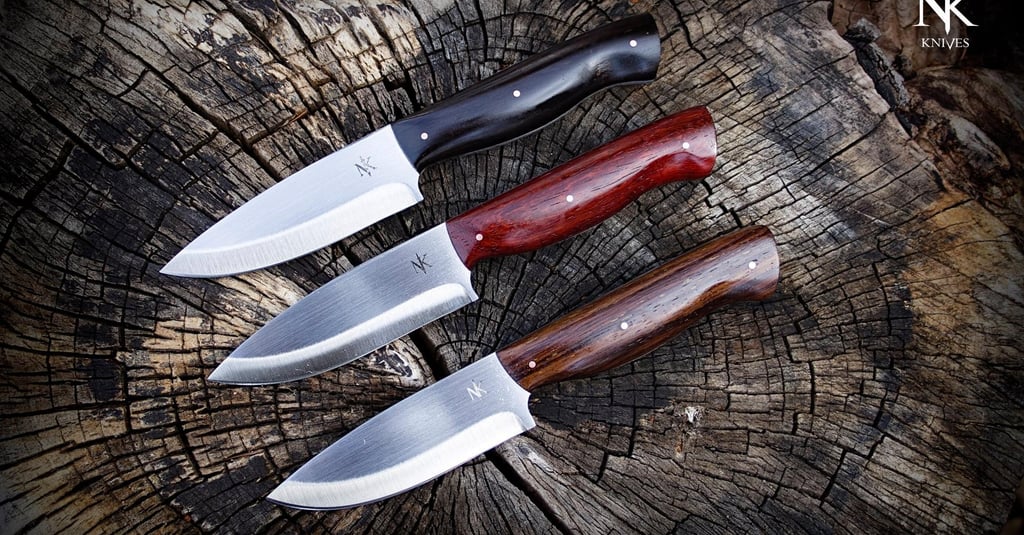Understanding Blade Design: The Evolution and Functionality of Blades Over Time
10/6/20253 min read


The Historical Context of Blade Design
The evolution of blade design over the past thousand years serves as a striking example of how innovation can be driven by user needs and material availability. As societies advanced through different historical periods, numerous factors influenced the shape and function of blades, reflecting the changing demands of their users. Initially, blades were primarily crafted from readily available materials such as stone, bronze, and iron. Each technological advancement in metallurgy resulted in blades with enhanced durability, sharper edges, and more efficient designs suitable for a variety of tasks, including cutting, thrusting, and slicing.
In the medieval era, blades were further refined as artisans honed their manufacturing skills, allowing for the creation of specialized weapons and tools. The advent of high-carbon steel in the late Middle Ages enabled blacksmiths to produce stronger and more resilient blades, laying the groundwork for the exceptional swords and daggers of this period. The shape of a blade evolved not only to enhance combat efficacy but also in response to societal needs such as agriculture, trade, and craftsmanship. Each blade type was tailored to the specific requirements of its environment, leading to regional variations in design that tell a compelling story about the users themselves.
The survival of certain blade designs over time underscores the notion of adaptability; only those designs that effectively met user needs were able to thrive amidst an ever-changing landscape of technology and society. This adaptability was crucial, as blades that failed to offer appropriate functionality or maintain performance standards were quickly abandoned in favor of superior alternatives. Ultimately, the historical context of blade design serves as a testament to the dynamic relationship between human needs and technological progress, illustrating how the features and functionalities of blades have been indelibly shaped by the demands of their users throughout history.
Common Edge Geometries: An Overview
Blade design has progressed significantly over the centuries, leading to the development of various edge geometries that serve distinct purposes. Understanding these common edge geometries—convex, hollow, sabre, and scandi—can provide insight into their unique characteristics and applications in different contexts, including combat, utility, and craftsmanship.
The convex edge, characterized by a smooth, rounded curve, offers a perfect balance of sharpness and durability. This design allows for effective slicing while maintaining robustness, making it popular among outdoor and combat knives. The convex geometry dissipates stress along the blade, preventing chipping, which is crucial in demanding environments.
Next is the hollow edge, which features a concave shape that creates a thinner blade at the edge. This design excels in providing exceptional cutting capability, especially for tasks that require precision, such as filleting fish or carving meats. The hollow ground blades are appreciated for their ability to reduce friction, allowing for cleaner cuts. Historically, this geometry rose to prominence due to its performance in culinary applications.
The sabre edge is distinctive for its compound grind, from flat to a micro bevel at the cutting edge. This design provides a robust blade suitable for versatile tasks, from combat to utility uses. The sabre geometry's versatility stems from its ability to support the application of force effectively, creating a powerful cutting action while maintaining overall structural integrity.
Lastly, the scandi edge features a bevel ground close to the edge, offering an exceptional sharpness that's easy to maintain. This edge type finds utility in woodcraft and survival knives, where slicing and carving are essential. Its simplicity and effectiveness have made it a staple among craftsmen and outdoor enthusiasts alike.
Overall, each of these edge geometries has been shaped by historical contexts, evolving to meet specific needs and preferences through time.
Analyzing Blade Performance: Width and Angles Matter
The performance of a blade is intrinsically linked to its physical attributes, particularly the thickness of the blade stock and the angles of the grind. These factors play a critical role in defining the overall strength and effectiveness of a blade, influencing its performance across various applications. When analyzing blade performance, one must consider the interplay between thickness, grind angles, and the intended use of the blade.
The angles of the grind have a substantial impact on how a blade engages with materials. A steep grind angle typically results in a sharper edge, enhancing the blade's slicing ability but also potentially diminishing its strength. On the other hand, a shallower grind angle can provide better durability and strength at the cost of cutting efficiency. Users should consider not only the grind type but also the interplay of these angles with the intended application to ensure optimal performance.
It is essential to synthesize the information regarding blade design principles, as understanding the significance of thickness and angles can lead to better-informed decisions in blade selection. These considerations allow users to choose blades that meet specific demands rather than relying solely on grind type, thereby enhancing overall efficiency and effectiveness in their tasks.
